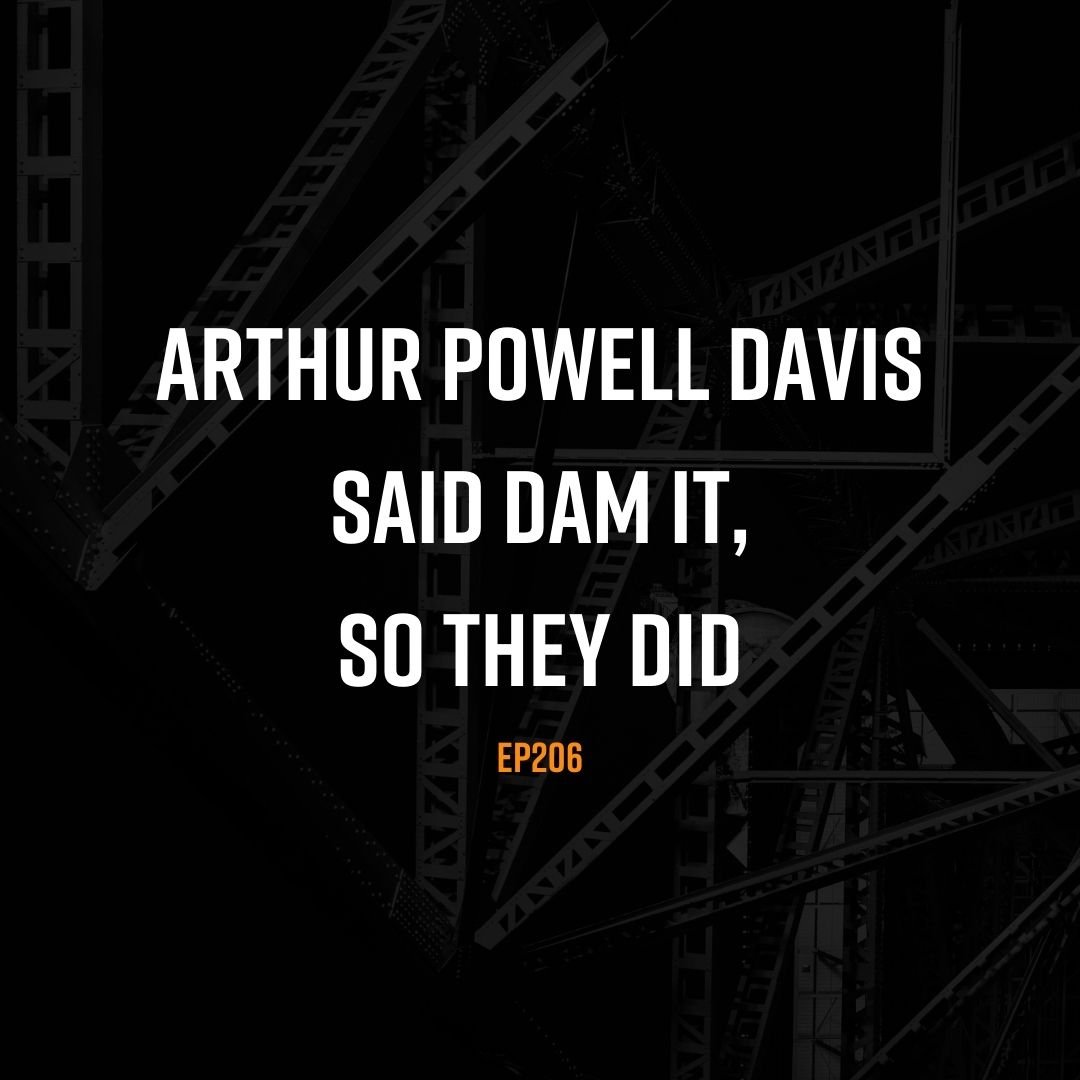Arthur Powell Davis Said Dam It, So They Did
If you're interested in learning more about the construction of Hoover Dam, scroll to the end of the show notes for links.
00:00 - A Quick Dam Joke, the Consortium, and Some Stats
We question our ability to keep our puns in check. Sorry, Mom.
Then we move on to the contractors. We discuss the consortium called Six Companies Inc. that won the bid at nearly $49 million, approximately $860 million in today’s dollars.
Eddie makes a conveniently timed comparison to the Washington Monument. The Hoover Dam is 726 feet tall–almost 200 feet taller than the Washington Monument. Only 6 buildings in the US were taller than the dam when it was built.
We discuss some stats:
-4.4 million cubic yards of concrete were used in the project. That is enough to pave a two-lane road from Seattle to Miami or a four-foot-wide sidewalk around the Earth at the Equator or enough to pave a two-lane road from Seattle to Miami.
-Its base is as thick as the length of 2 football end-to-end
-It has 4 intake towers (30’ diameter each) that can carry enough water to fill 900 bathtubs in only one second. That means 1,448,100 “bathtubfuls” of water will have passed through the dam in the time it takes you to listen to this episode.
07:15 - Construction Costs and Power Output
Tyler mentions that the cost of the initial construction, which finished in 1936, wasn't paid off until 1987. Eddie discusses the way that we handle financing for capital projects, spending not just tomorrow’s money–but money that won’t come in for decades.
We compare these expenses to the absolutely monumental amount of economic impact that the electricity from the dam has had. Here’s where the 4 billion kilowatt-hours each year goes:
19% to Arizona
23% to Nevada
58% percent goes to California (15% to LA, which is 270 miles away)
10:46 - Hoovervilles and Fatalities
Eddie fills the gaps in Tyler’s history education with an explanation of the Hoovervilles from the Great Depression. Hoover didn’t get much positive PR aside from this dam.
We discuss the desperation of the Great Depression is shown by the fact that the ability to line up workers for a job to do this. Tyler shares the troubling coincidence is the fact that the first and last men to die on this project were father and son.
Thinking about these human costs leads us into a discussion about the structure of incentives and penalties that drove the owners of Six Companies to push the pace of construction.
19:53 - Takeaways: Big Projects, Green Energy, Old-school Drafting
We discuss the fact that bold projects lead to emboldened people who move on to even bolder projects. Sometimes biting off more than you can chew leads to growth.
Tyler makes the point that this dam was a green-energy project long before the term “green energy” was coined. He also expresses awe at the thought that all of the drafting for this massive project would have been done by hand.
Eddie stops short of calling himself a history buff, but he expresses a deep respect for the teams of designers and workers who accomplished massive projects like this with so little help from what we consider advanced technologies.
Tyler invites you to submit your ideas for future research-based projects.
If you’re interested in additional details about the Hoover Dam, explore these sources:
B1M video: compares the world’s largest dams to other structures
Check out the partners that make our show possible.
Find Us Online: BrosPodcast.com - LinkedIn - Youtube - Instagram - Facebook - TikTok - Eddie's LinkedIn - Tyler's LinkedIn
If you enjoy the podcast, please rate us on Apple Podcasts, Spotify, or wherever you listen to us! Thanks for listening

